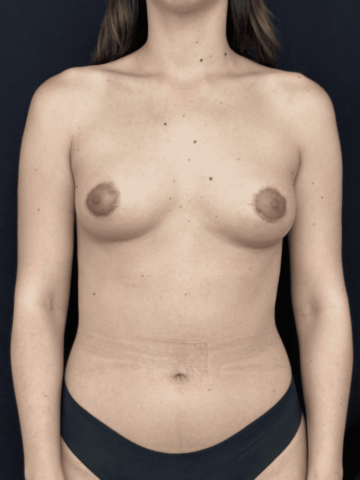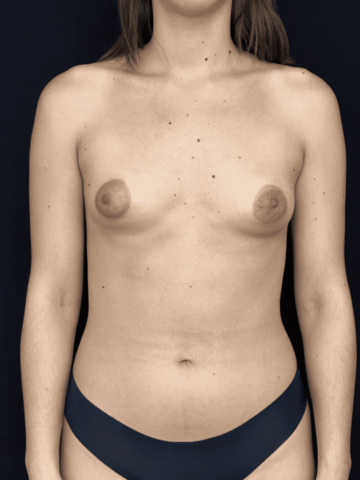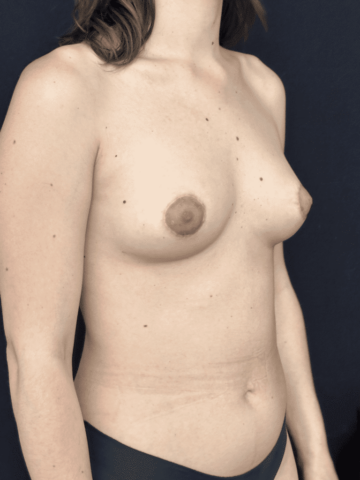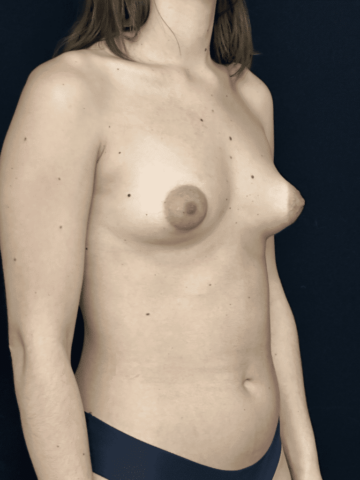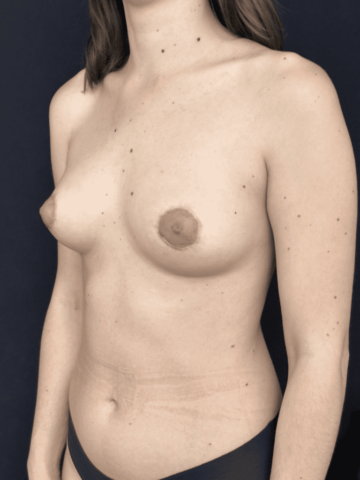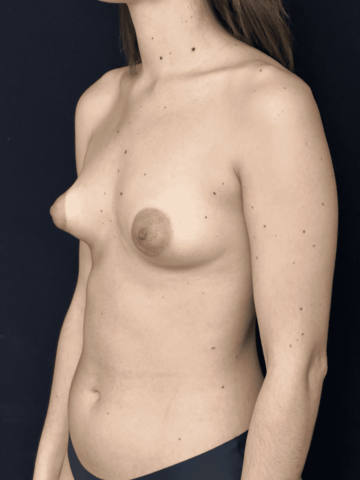Breast malformation
The strong points
Several types of malformations affecting the volume, shape or position of the breast
Procedure covered by social security under certain conditions.
- High patient satisfaction
Main known malformations
Breast deformities are common and cause significant functional and psychological discomfort for patients.
The treatment of breast deformities is based on a precise diagnosis, in order to propose the most appropriate surgical technique.
Breast deformity surgery is covered by the French health insurance system.
Tuberous breasts
This malformation can be classified into three stages, each requiring different surgical methods.
The anomaly common to all tuberous breasts is an abnormality of the base of the breast: it takes on the appearance of a tubercle. More often than not, the portion of the breast below the areola is poorly developed, causing the breast to tilt downwards.
Other criteria for tuberous breasts are:
- A high position of the submammary fold
Anomalies of the nipple-areolar plate: it is always large in relation to the volume of the breast.
- Breast volume abnormalities. The breasts are most often hypotrophic (A cup) but they can be of normal volume and sometimes even hypertrophic;
- Breast asymmetry is present in more than two thirds of cases.
Both breasts are usually tuberous, and all grades can be combined.
Treatment of this malformation aims to achieve the most natural, symmetrical breasts possible. Fat injection or Lipofilling has revolutionized the treatment of this malformation. We systematically perform at least one session of fat injection to add volume to the poorly developed lower portion of the breast. A second operation then consists in fitting silicone prostheses or injecting fat again, depending on the case.
For breast implant surgery, see our article on changing your breast prosthesis.
Poland Syndrome
Poland syndrome combines breast hypoplasia with a thoracic malformation of variable size and sometimes with upper limb anomalies.
The minimal expression of the thoracic malformation is the absence of the sternocostal portion of the pectoralis major muscle.
The mammary gland is usually hypoplastic, sometimes totally absent.
The nipple-areolar plate is usually small in diameter, located superiorly and laterally, and may even be totally absent.
The surgical treatment of Poland syndrome is complex. In moderate forms, implantation of a breast prosthesis may be associated with a subclavicular prosthesis or lipofilling, or even with transposition of the dorsalis major muscle. The treatment of major forms of Poland syndrome is difficult and is based on techniques derived from breast reconstruction after cancer. We currently favor treatment by repeated lipofilling.
Asymmetry
Breast asymmetry is considered pathological by the French social security system if it requires compensation of one cup or more in the bra. Breast asymmetry is most often congenital, but can also result from the after-effects of infection, surgery or even breast-feeding. In moderate cases, lipofilling is preferred, while in more pronounced cases, lipofilling is combined with the insertion of a breast implant. Sometimes, one of the two breasts is enlarged and drooping. In this case, we perform breast reduction surgery with T-shaped scars.
Invaginated nipple
An invaginated nipple is a common condition, apparently benign, but which has a very significant functional or psychological impact.
Medical treatments are available, but are fairly restrictive. A simple surgical treatment can effectively resolve the problem.
Umbilical nipple surgery: Principles of invaginated nipple cure
An invaginated nipple is defined by the nipple turning inside out, deep inside the areola. This condition may be reversible or permanent. This unsightly condition can be painful and prevent breastfeeding. The absence of a nipple can have a major impact on body image and sex life.
There are many causes. They include hypertrophy of the areola's smooth muscle fibers, and retraction of the fibrous partitions surrounding the galactophores (ducts bringing milk to the nipple).
Medical suction treatment is available. The Philips Niplette® system gently encourages nipple eversion, particularly during breastfeeding. If there is significant hypertrophy of the areola's smooth muscle fibers, we combine this with a subcutaneous injection of botulinum toxin or Botox.
However, discontinuing its use often leads to recurrence.
Umbilical nipple surgery is therefore indicated if medical treatment fails, particularly if breast-feeding is not envisaged in the future.
There are 2 main types of surgical techniques:
A flapless technique: the nipple is deinvaginated, then the fibrous trabeculae are incised on either side under the skin, and the gland re-adosed to support the nipple. This is a simple, scar-free technique, but it carries a 10% risk of recurrence. Breast-feeding is not possible after this surgery.
A technique with flaps. 2 triangles of areola are lifted on both sides of the nipple. Their skin is removed and then they are buried in the nipple to stabilize it. It is possible to consider breastfeeding with this technique. Recurrences are very rare. The disadvantage is the presence of two scars and the possible deformation of the areola.
The procedure can be performed under local anesthesia with sedation (neuroleptanalgesia). It can be performed as an outpatient surgery, or even in the office under pure local anesthesia.
No time off work is necessary. It is imperative to stop smoking at least one week before and 15 days after the operation.
In practice
The diagnosis of the malformation often requires additional examinations.
If a thoracic malformation is associated, a CT scan is requested in order to perform a 3-dimensional reconstruction.
If a fat injection is considered, a digital mammogram and a breast MRI are prescribed.
Questions / Answers
Is breast deformity surgery covered by health insurance?
Yes, but only after the opinion of the doctor advising you on social security, especially if breast implants are being considered. His consultation is mandatory before the operation and is requested by a request for prior agreement given by your surgeon.
Treatment of invaginated nipples is covered by health insurance.
Certaines malformations congénitales, comme le syndrome de Poland ou les seins tubéreux, entraînent des asymétries importantes pouvant justifier la prise en charge d’une augmentation mammaire.
How much does surgery for a breast deformity cost?
It all depends on the complexity of your case.
Advanced Poland syndrome may require a custom-made thoracic prosthesis, followed by 2 to 3 fat injections.
We charge additional fees ranging from €1,500 to €4,500 for each stage of reconstruction.
A precise treatment plan with estimates for each procedure will be provided to you prior to surgery.
For an operation to cure a unilateral invaginated nipple, our fee is €1,000. For surgery on both nipples, our fee is €1,500. These fees may be covered by your complementary health insurance.
What are the possible complications of an invaginated nipple cure?
Partial or total necrosis of the nipple (very rare) may occur, especially if smoking has not been stopped prior to surgery.
Most surgical techniques prevent subsequent breast-feeding.
Problems of areola and nipple sensitivity may persist for 6 months after surgery.
Have a question? Please contact us!
Cosmetic surgery in Paris
Docteur Yaël Berdah and Docteur Marc-David Benjoar
Plastic surgeons in Paris France

